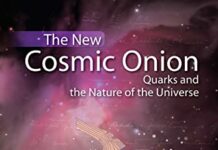
Ebook Info
- Published: 2004
- Number of pages: 158 pages
- Format: PDF
- File Size: 2.61 MB
- Authors: Frank Close
Description
In this compelling introduction to the fundamental particles that make up the universe, Frank Close takes us on a journey into the atom to examine known particles such as quarks, electrons, and the ghostly neutrino. Along the way he provides fascinating insights into how discoveries in particle physics have actually been made, and discusses how our picture of the world has been radically revised in the light of these developments. He concludes by looking ahead to newideas about the mystery of antimatter, the number of dimensions that there might be in the universe, and to what the next 50 years of research might reveal.ABOUT THE SERIES: The Very Short Introductions series from Oxford University Press contains hundreds of titles in almost every subject area. These pocket-sized books are the perfect way to get ahead in a new subject quickly. Our expert authors combine facts, analysis, perspective, new ideas, and enthusiasm to make interesting and challenging topics highly readable.
User’s Reviews
Reviews from Amazon users which were colected at the time this book was published on the website:
⭐This is indeed a very short introduction (129 pages of text), but it is also very informative. The book introduces particle physics from the standpoint of experimental evidence, without recourse to any theory. Thus, there are plenty or bubble chamber photographs, but no mention of group theory or even quantum mechanics. I recommend this book to anyone interested in a highly readable overview of particle physics.What is in the book -The book focuses on the particles, protons, neutrons and electrons that make up our physical world, and the quarks that make up protons and neutrons. The book also covers photons and the different types of neutrinos, plus mesons and muons. While not the focus of the book, it also discusses the forms of matter found at high energies in accelerator experiments – the different types of quarks (the strange and charm, top and bottom) as well as the up and down quarks that make up protons and neutrons. Anti particles are discusses as are the possibilities of supersymmetric particles. There is also a brief mention of the Higgs field and the Higgs Boson. Gluons are mentioned, but not the fact that there are different types of them. The book is divided into 10 chapters as follows:Chapter 1 – Journey to the center of the universe – A general introduction to the atom and the universe at large.Chapter 2 – How big and small are big and small – A discussion of size from the size of quarks inside a proton or neutron as compared to the size of galaxies and the visible universe.Chapter 3 – How we learn what things are made of, and what we found – An introduction to x-ray imaging and particle accelerators.Chapter 4 – The heart of the matter – The constituents that make up atoms – electrons, protons and neutrons and the quarks that make up the protons and neutrons. This chapter also includes a discussion of neutrinos and anti-particles.Chapter 5 – Accelerators: cosmic and man-made. Cosmic rays as a producer of elementary particles and different types of accelerators.Chapter 6 – Detectors: cameras and time machines. The use of film, cloud chambers, bubble chambers and ore modern devices and how they are used to detect particles.Chapter 7 – Forces of nature – A discussion of force particles – photons, W and Z particles, and gluons, plus a mention of the possibility of gravitons.Chapter 8 – Exotic matter and anti-matter – The particles found at higher energies in accelerator experiments. (I found this to be the most difficult chapter and the one that I would have liked to have expanded a bit.)Chapter 9 – Where does matter come from? – A discussion of the creation of hydrogen, helium and heavier elements.Chapter 10 – Questions for the 21st century – Dark matter, Higgs Boson, supersymmetric particles and some questions for the future such as multidimensional space.
⭐As far as the “A Very Short Introduction” goes, this book is a little bit of an outlier. It lacks the novel approach that we tend to see in the series, which encourages us to buy them. Despite that minor oddity, Close’s “Particle Physics: A Very Short Introduction” is a wonderful member of the series, because it doesn’t derive its value from the novelty that typifies Oxford University Press’s series. The value of this work comes from the incredibly potent condensation of material that comprises it. In recently doing a survey of basic particle physics literature, I read a number of books, a number of them introductory, and I was surprised to find that the information presented in this book still had a few bits and pieces that the others missed. Therefore, if you are in the business of wanting to know quite a bit of the basics of particle physics, but without fluff, this book is the way to go. Also, the historical treatment is rather satisfying, insofar as developing a context for the scientific content.Presentation may be an issue for some, as Close gives a just-the-facts-ma’am approach. If you are looking for an introduction is a little less stodgy and a bit more fun, I recommend considering the following, instead: “The Brittanica Guide to Particle Physics,” “From Atoms to Quarks,” or “The Elusive Neutrino: A Subatomic Detective Story.” It is a give and take: Close’s introduction has more material and the coherency of the presentation cannot be beat, but you give up style. Overall, if I am recommending a particle physics book to an undergrad, Close is the way to go. Otherwise, it really is a matter of taste and what you are looking to get out of the book, especially if entertainment is a value (the one-star review for this book was given for this reason, but, as I said, it is a matter of what you want to get out of the book, so beware).
⭐I just love these small books. You get a nice, brief overview of a particular subject, and there are many subjects covered by these books. In this book, Frank Close, professor of physics at Oxford University, enlightens us on the nature of the particles that make up our universe.He begins by discussing the nature of matter, atoms, and forces. We then get a feel for the relative size of the constituents of our world from the very small (angstroms and Fermi) to the very large (the universe). We are provided with a good explanation of the electron volt (eV) and what it means when trying to ascertain the nature of the atom and the protons, neutrons, quarks, and electrons that compose it. There is some discussion of cyclotrons and synchrotrons, the effects of relativity on the accelerated particles, and the different types of colliders in use today.The author spends a chapter discussing the various particle detection methods from the early techniques to the present, such as the cloud chamber, emulsions, bubble chambers, spark chambers, proportional chamber, drift chamber, and silicon strip detectors. We learn also about the neutrino detection methods via the SuperKamiokande experiment and the Sudbury Neutrino Observatory – all very interesting stuff. Following this, we get an introduction into the weird world of quarks, such as the charm, strange, bottom, and top quarks, concluding with a short discussion on why the world consists of matter rather than antimatter.
⭐This is a good book, however, I do feel it needs a second edition. It has obviously been updated circa 2012, but I suspect that this has been done by adding in a paragraphs and sections rather than some more detailed re-writing. For instance, near the beginning it states that nobody knows if neutrinos have mass. Toward the end of the book it states that we have discovered that they do. Frank Close is a good writer and I hope that OUP pay him to write a fully revised text. I think many A level students would find this book useful; the sections on detectors, especially so and I am going to advise them to read this.
⭐This I found to be an excellent introduction to particle physics. The enthusiasm of the author for his subject comes across very strongly and Frank Close, who is a Professor of Physics at Oxford University, is obviously very knowledgeable about particle physics. In what is a short volume (part of the “A Very Short Introduction” series) he covers a lot of ground in a clear manner and without the need for any mathematics. Close was able to explain some concepts to me, a non-physicist, with much better clarity than other authors have achieved. Topics covered include the particles and forces of the Standard Model, anti-matter and the Big Bang. The chapter entitled “How big and small are big and small?” includes some fascinating comparisons which make one appreciate the dimensions, masses and energies of particles.For my liking, Close devoted too much space, namely a whole chapter, to the different accelerators used to investigate particles, such as cyclotrons and synchrotrons, and explaining the advantages and disadvantages of linear versus circular accelerators. Likewise, the next chapter exclusively covered the detectors used to pick up evidence of particles and particle collisions. This was like a history lesson in the equipment used in particle physics, which to my mind detracted from the main theme of the book. Consequently, I merely skimmed through these two chapters. Of course, this is my personal opinion and other readers may find this sort of information more absorbing than I did.The final chapter is entitled “Questions for the 21st Century” in which Close speculates on the nature of dark matter, supersymmetry, massive neutrinos, mass (Higgs boson), quark gluon plasmas and the possibility of multi-dimensional universes. As the book was published in 2004, and I have read it nine years later, I’m left wondering what progress there has been in those nine years in these areas, over and above the well-publicised, probable discovery of the Higgs boson.As well as an index (which is not necessary in the Kindle version I read) the book usefully includes a glossary of terms.
⭐Of this series, this is one of the more lucidly written examples. Prof. Close has a method of drawing you into a fairly informal discussion, but with direct examples to illustrate his points, and obvious authority. His tone is kindly, and reminded me of the way Carl Sagan or Richard Feynman communicated ideas; Methodically, yet elegantly.The areas key for a basic understanding of the subject are present, and he elaborates on some of the terminology used without losing the reader.There is only a slight misgiving, in that he strays off course into the realm of speculative string theory and higher dimensions in a rushed manner near the end of the book. This does relate to some of the earlier chapters in a small way (supersymmetry), but limited to two pages, is all too vague so the uninitiated may get confused.Other than that, it has enlightened me greatly, and along with the VSI to Relativity, gives a nice foundation which can be used to consult more ambitious material.
⭐An excellent book. As a one-time chemist my scientific background is in atoms and molecules and I’d paid no heed to the smaller components of matter.Prof Close provides a good overview of the subject at an accessible level. I think I understand more about this subject than before. Which was exactly what I wanted.
⭐This series is excellent for as the title suggests, brief introductions. Well written – Frank Close is a good scientific author, I have a number of his books.
Keywords
Free Download Particle Physics: A Very Short Introduction (Very Short Introductions Book 109) 1st Edition in PDF format
Particle Physics: A Very Short Introduction (Very Short Introductions Book 109) 1st Edition PDF Free Download
Download Particle Physics: A Very Short Introduction (Very Short Introductions Book 109) 1st Edition 2004 PDF Free
Particle Physics: A Very Short Introduction (Very Short Introductions Book 109) 1st Edition 2004 PDF Free Download
Download Particle Physics: A Very Short Introduction (Very Short Introductions Book 109) 1st Edition PDF
Free Download Ebook Particle Physics: A Very Short Introduction (Very Short Introductions Book 109) 1st Edition




